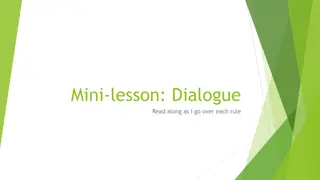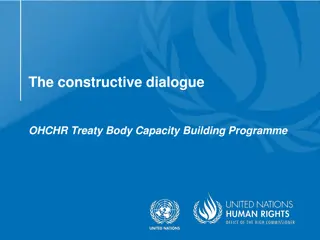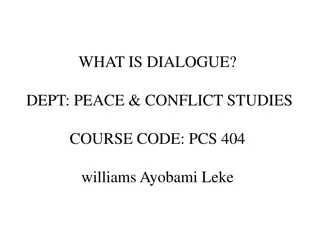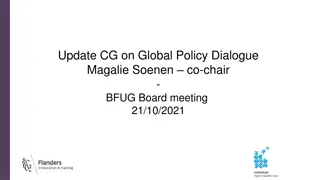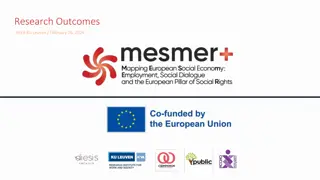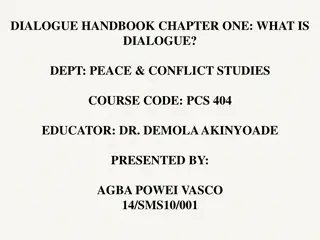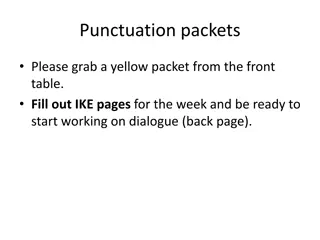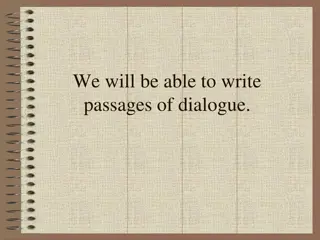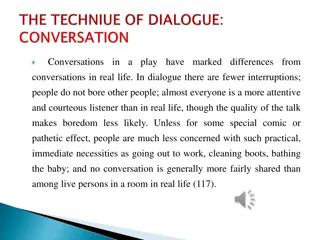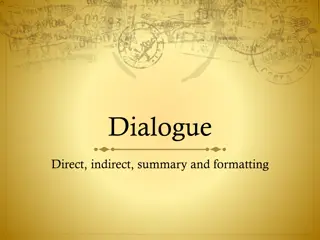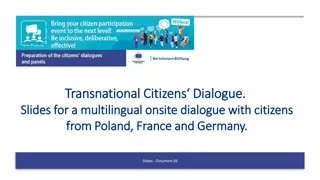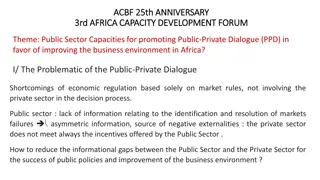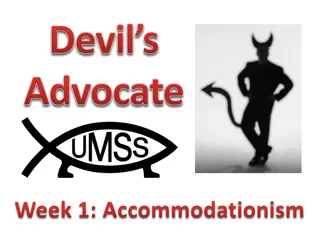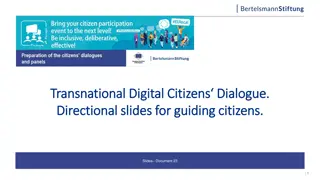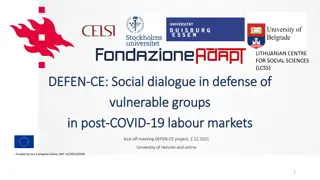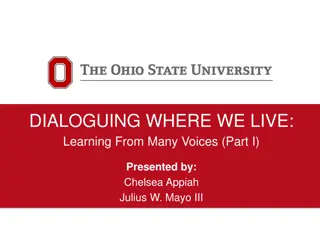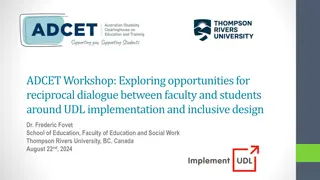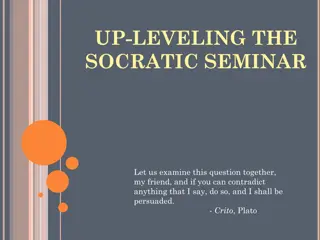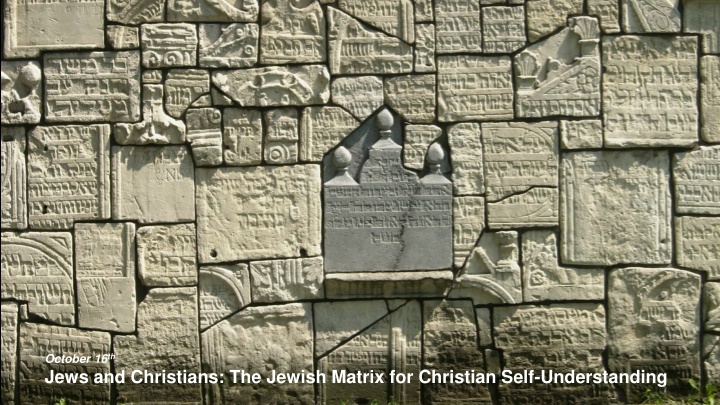
Jewish Matrix for Christian Self-
Explore the historical background of the Shoah (Holocaust) and the evolving relationship between Jews and Christians, leading to the Nostra Aetate declaration in 1965 aimed at healing past divisions and recognizing the spiritual ties between the People of the New Covenant and Abraham's stock.
Download Presentation

Please find below an Image/Link to download the presentation.
The content on the website is provided AS IS for your information and personal use only. It may not be sold, licensed, or shared on other websites without obtaining consent from the author. If you encounter any issues during the download, it is possible that the publisher has removed the file from their server.
You are allowed to download the files provided on this website for personal or commercial use, subject to the condition that they are used lawfully. All files are the property of their respective owners.
The content on the website is provided AS IS for your information and personal use only. It may not be sold, licensed, or shared on other websites without obtaining consent from the author.
E N D
Presentation Transcript
October 16th Jews and Christians: The Jewish Matrix for Christian Self-Understanding
Background of Shoah Nostra Aetate began as Jewish problem (De Iudaeis) and became major example of ressourcement; impetus for reform comes not from centre but from periphery of Church (Yves Congar). No history of Shoah was written until early 60 s and only with Eichmann trial (1961) did Jews begin to talk about it. During 1950s Catholic journals published little about relations with Jews. Shift came about with realisation post-war that Jews and Christians suffered together in Nazi period, that conversion was no security against death camps. Theologians sensitised to dangers of anti- Judaic theology, forming climate of contempt which made Shoah possible. ICCJ instrumental in bringing Christian and Jewish thinkers together to talk seriously about a shared faith in shadow of Auschwitz. Seelisberg, July-August 1947: an emergency meeting called as an address to the churches to consider current anti-Semitism in various European countries and offer practical measures for the healing of Jewish-Christian relationship . In spite of the catastrophe which has overtaken both the persecuted and the persecutors, and which has revealed the extent of the Jewish problem in all its alarming gravity and urgency, anti-Semitism has lost none of its force, but threatens to extend to other regions, to poison the minds of Christians, and to involve humanity more and more in a grave guilt with disastrous consequences. 10 points: 4 remember and 6 avoid , repeating Jews and Christians share a single tradition, and care need to be taken not to use language that sets one against other.
Nostra Aetate in our time Muted attention to Seelisberg and growing awareness of need to heal wounds of division caused by Shoah - but most Catholic theologians saw Judaism as superseded and replaced by Church. Christian theological instincts remained largely unchanged throughout pre-war and immediate post- war period. Fixed readings of NT hard sayings , such as 1Thess 2.16; Matt 27.25; Heb 3.16 etc. Preliminary process: only scripture scholars at Biblicum asked for attention to relations with Jews; in itself significant because study of Bible showing how complex and diverse 1st C world really was. Visit of Jules Isaac to Pope John XXIII (1960): the teaching of contempt : Christian anti-Judaism essentially theological by its coherence, and by the variety of its themes more or less arbitrarily founded upon a certain interpretation of Scripture . JI then quoted Catechism of Council of Trent on responsibility for death of Christ. First versions on Jews (what became in final version C4) subsumed within other conciliar documents, on Church and ecumenism; Encountered opposition from Jewish groups and from bishops in Middle East sensitive to response from Palestinian people; new version includes Islam (C3); Pressure from Asian and African bishops meant perspective of document broadened from relations with Jews to relations with all people of faith (1, 2) (1965).
From On the Jews to the People of the Ancient Covenant ThenewSecretariat for Non-Christians took over the task of drafting what would become Chapter 4 of the declaration and entrusted it to three theologians John Oesterreicher, Gregory Baum and Bruno Hussar all of whom were converts from Judaism. Hussar commented at the time that nobody seemed to notice . As the sacred synod searches into the mystery of the Church, it remembers the bond that spiritually ties the people of the New Covenant to Abraham's stock. Thus the Church of Christ acknowledges that, according to God's saving design, the beginnings of her faith and her election are found already among the Patriarchs, Moses and the prophets. She professes that all who believe in Christ - Abraham's sons according to faith - are included in the same Patriarch's call, and likewise that the salvation of the Church is mysteriously foreshadowed by the chosen people's exodus from the land of bondage. The Church, therefore, cannot forget that she received the revelation of the Old Testament through the people with whom God in His inexpressible mercy concluded the Ancient Covenant. Nor can she forget that she draws sustenance from the root of that well-cultivated olive tree onto which have been grafted the wild shoots, the Gentiles. Indeed, the Church believes that by His cross Christ, Our Peace, reconciled Jews and Gentiles, making both one in Himself. (4)
The Church keeps ever in mind the words of the Apostle about his kinsmen: "theirs is the sonship and the glory and the covenants and the law and the worship and the promises; theirs are the fathers and from them is the Christ according to the flesh" (Rom. 9:4-5), the Son of the Virgin Mary. She also recalls that the Apostles, the Church's main-stay and pillars, as well as most of the early disciples who proclaimed Christ's Gospel to the world, sprang from the Jewish people. As Holy Scripture testifies, Jerusalem did not recognize the time of her visitation, nor did the Jews in large number accept the Gospel; indeed not a few opposed its spreading. Nevertheless, God holds the Jews most dear for the sake of their Fathers; He does not repent of the gifts He makes or of the calls He issues - such is the witness of the Apostle In company with the Prophets and the same Apostle, the Church awaits that day, known to God alone, on which all peoples will address the Lord in a single voice and serve him shoulder to shoulder (Zeph 3.9). Since the spiritual patrimony common to Christians and Jews is thus so great, this sacred synod wants to foster and recommend that mutual understanding and respect which is the fruit, above all, of biblical and theological studies as well as of fraternal dialogues. True, the Jewish authorities and those who followed their lead pressed for the death of Christ; still, what happened in His passion cannot be charged against all the Jews, without distinction, then alive, nor against the Jews of today. (4)
Although the Church is the new people of God, the Jews should not be presented as rejected or accursed by God, as if this followed from the Holy Scriptures. All should see to it, then, that in catechetical work or in the preaching of the word of God they do not teach anything that does not conform to the truth of the Gospel and the spirit of Christ. Furthermore, in her rejection of every persecution against any person, the Church, mindful of the patrimony she shares with the Jews and moved not by political reasons but by the Gospel's spiritual love, decries hatred, persecutions, displays of anti-Semitism, directed against Jews at any time and by anyone. Besides, as the Church has always held and holds now, Christ underwent His passion and death freely, because of the sins of human beings and out of infinite love, in order that all may reach salvation. It is, therefore, the burden of the Church's preaching to proclaim the cross of Christ as the sign of God's all-embracing love and as the fountain from which every grace flows. (4)
Islam In the final version of Nostra Aetate the academic work of scholars like Louis Massignon built on centuries of theological dialogue in the face of much political antagonism. The Church regards with esteem also the Muslims. They adore the one God, living and subsisting in Himself; merciful and all-powerful, the Creator of heaven and earth, who has spoken to human beings; they take pains to submit wholeheartedly to even His inscrutable decrees, just as Abraham, with whom the faith of Islam takes pleasure in linking itself, submitted to God. Though they do not acknowledge Jesus as God, they revere Him as a prophet. They also honour Mary, His virgin Mother; at times they even call on her with devotion. In addition, they await the day of judgment when God will render their deserts to all those who have been raised up from the dead. Finally, they value the moral life and worship God especially through prayer, almsgiving and fasting. Since in the course of centuries not a few quarrels and hostilities have arisen between Christians and Muslims, this sacred synod urges all to forget the past and to work sincerely for mutual understanding and to preserve as well as to promote together for the benefit of all mankind social justice and moral welfare, as well as peace and freedom. (3)
Introduction and Conclusion Chapter 1 begins with history of religions approach to religious questions asked by different people which is then extended with specific reference to particular religious traditions. In our time, when day by day mankind is being drawn closer together, and the ties between different peoples are becoming stronger, the Church examines more closely her relationship to non-Christian religions. In her task of promoting unity and love among men, indeed among nations, she considers above all in this declaration what men have in common and what draws them to fellowship. (1) Chapter 5 ends with pastoral exhortations, extending the imperative which rejects hatred, persecutions, displays of anti-Semitism, directed against Jews at any time and by anyone . The Church reproves, as foreign to the mind of Christ, any discrimination against people or harassment of them because of their race, colour, condition of life, or religion. On the contrary, following in the footsteps of the holy Apostles Peter and Paul, this sacred synod ardently implores the Christian faithful to "maintain good fellowship among the nations" (1 Peter 2:12) (5)
From History to Theology Chapter 2 takes forward the History of Religions approach with a theological reference to what is called a certain perception of that hidden power which hovers over the course of things and over the events of human history which some peoples regard as a Supreme Being, and even name as Father. Religions that are bound up with an advanced culture have struggled to answer the same questions by means of more refined concepts and a more developed language. Thus in Hinduism, people contemplate the divine mystery and express it through an inexhaustible abundance of myths and through searching philosophical inquiry. They seek freedom from the anguish of our human condition either through ascetical practices or profound meditation or a flight to God with love and trust. Buddhism, in its various forms, realizes the radical insufficiency of this changeable world; it teaches a way by which people, in a devout and confident spirit, may be able either to acquire the state of perfect liberation, or attain, by their own efforts or through higher help, supreme illumination. Likewise, other religions found everywhere try to counter the restlessness of the human heart, each in its own manner, by proposing "ways," comprising teachings, rules of life, and sacred rites. (2)
Central Imperatives NB (1) although presented as conclusion to Chapter 2 on religion and before Chapter 3 on the Muslims and Chapter 4 on the Jews, these conclusions and pastoral applications have an important theological weight that links what have become two interdependent parts of the Declaration. (2) an inevitable reticence pervades this section of the declaration with nothing said about what precisely reflections of the ray of Truth or seeds of the Word might be. The implication is that this is the object of the various levels of dialogue that must follow the imperatives. The Catholic Church rejects nothing that is true and holy in these religions. She regards with sincere reverence those ways of conduct and of life, those precepts and teachings which, though differing in many aspects from the ones she holds and sets forth, nonetheless often reflect a ray of that Truth which enlightens all people. Indeed, she proclaims, and ever must proclaim Christ "the way, the truth, and the life" (John 14:6), in whom men and women may find the fullness of religious life, in whom God has reconciled all things to Himself. The Church, therefore, exhorts her sons and daughters, that through conversations and collaboration with the followers of other religions, carried out with prudence and love and in witness to the Christian faith and life, they recognize, preserve and promote the good things, spiritual and moral, as well as the socio-cultural values found among these people. (2)
Writing Nostra Aetate - Dialogue begins when persons meet. John XXIII gave Jewish question to Cardinal Augustine Bea (1881-1968), major architect of Council and particularly Dei Verbum, constitution on Revelation Bea opened up fruitful relationship with Abraham Joshua Heschel (1907-1972), Polish-American Hasidic rabbi. PhD in Berlin on prophetic consciousness; respected teacher and writer, leading figure in American civil rights movement. AJH embodied human face of process of ecclesial ressourcement, living tradition of Judaism. Challenged Christian anti-Judaism, refusal to allow continuing significance for Christians of OT. Legacy of Marcion s heresy (c85-160) , which by setting angry God of OT against merciful God of Jesus, reduced canon of scripture to Luke s Gospel and a selection of Pauline epistles. Rather First Covenant or Hebrew scriptures provide whole culture of faith, language, symbols and narratives without which Christian faith would not be able to speak of itself. Jews and Christians are linked by a trajectory of faith which is rooted in a common heritage of divine revelation and human response, worked out in time through the rituals of Passover and memories of Exodus and Exile, disaster and return, loss and hope. Old and New Testaments not two stories of two separate peoples but God s story toldwith two divergent yet legitimate interpretations.
Reading Nostra Aetate Church s relationship with the religions approached in two Vatican 2 documents, Lumen Gentium and Nostra Aetate, former using traditional language of soteriology, latter more specific question of Church s origins within 1st C historical relationship with Jewish people. Strictly a Dogmatic Constitution has greater weight than a Declaration - but that tends to avoid the issue, namely significance of NA as experience of learning by Church. Although Nostra Aetate has major implications for the Church, it needs to be read not as an appendage to LG but through lens of Dei Verbum: God s own action of revealing not message about God but God s own self, inviting human beings into a personal relationship of love. Theology of revelation central to Vatican II: replacing two source theory of Tradition and Scripture with single source of God s continuing guidance of the Church through the Spirit of Christ. Words of Scripture not primary source of God s action in the world which are then to be interpreted by the Church but already the living record of the incarnate Word of God forming a people which in principle embodies whole of humankind called to a new fullness in God. Single most important source is Paul s meditation on fate of his own people in Romans 9-11. God is constant and will bring to a fullness what was begun with promises made to Israel; in due time God will graft back broken branches of true olive. Single most important implication: if Sinai Covenant has not been revoked, OT cannot simply be regarded as an inadequate forerunner of the New.
Dei Verbum - Pastoral and Dialogical First scheme on sources of revelation rejected for not being sufficiently scriptural and for lacking pastoral sensibility which reflects God s own loving concern for people. For centuries, Catholics and others have thought it enough to give a clear explanation of their divergent teachings, but they both did it in their categories, which the other did not understand. The result: nothing. For some time now, a different method has been introduced: ecumenical dialogue. This involves paying attention to the way in which doctrine is expressed, so that it can be understood by the other. This is not a bargaining for unity; it is not an attempt to convert; but it is, on both sides, the giving of a clear witness which takes the other into account. It is this approach that our texts should take. It is not easy! (Yves Congar, Diary of the Council) Dei Verbum not new theological synthesis for new age but meditation on Church s experience of being formed and transformed through Word of God which goes on speaking in world. Scripture itself as record of Church s own experience of being confronted by Mystery of Risen Lord needs to be remembered : IE performed liturgically and meditated personally (EG Lectio Divina)and thus as sacred page becoming the very soul of theology . Tradition not a set of truths which give further information about God not contained in scripture, but the process by which, through guidance of Holy Spirit, that life-giving dialogue between God and human beings is nourished and preached to succeeding generations. Old and New are one but distinct; thus Christian identity is not self-subsistent but relational; existing not apart from but in relationship with the living faith of Israel.
Judaism intrinsic to relational Christian Faith John Paul II: personal knowledge of Judaism through Jewish friends in Wadowice Crossing the Threshold of Hope (1994) Rome, March 12, 1979: To representatives of World Jewish organisations: Our two religious communities are connected and closely related at the very level of their respective religious identities. For a Catholic Christian fraternal dialogue and fruitful collaboration is a religious obligation. Mainz, November 1980: Judaism as a living legacy ; Hebrew Scriptures and Jewish community which witnesses to those Scriptures have permanent value . The encounter between the people of God of the Old Covenant, which has never been abrogated by God (see Rom 11:29), and that of the New Covenant is also an internal dialogue in our Church, similar to that between the first and second part of its Bible . Rome Synagogue, 1986: The Church of Christ discovers its links' with Judaism by pondering its own mystery'. The Jewish religion is not extrinsic' to us, but in a certain manner, it is intrinsic' to our religion. We have therefore a relationship with it which we do not have with any other religion. You are our favoured brothers and, in a certain sense, one can say our elder brothers .
New Beginnings for Jewish-Christian Relations Dec 1974: Guidelines and suggestions for implementing the conciliar declaration Nostra Aetate Reiterates teaching of NA with specific recommendations for dialogue and mutual understanding, advocating deeper knowledge of Judaism as living tradition rich in religious values . The problem of Jewish-Christian relations concerns the Church as such, since it is when pondering her own mystery that she encounters the mystery of Israel. Therefore, even in areas where no Jewish communities exist, this remains an important problem. There is also an ecumenical aspect to the question: the very return of Christians to the sources and origins of their faith, grafted on to the earlier Covenant, helps the search for unity in Christ, the cornerstone. June 1985: Notes on the correct way to present the Jews and Judaism in preaching and catechesis More detailed teaching on the relationship between Old and New Testaments, Jewish roots of Christianity, Jewishness of Jesus and early Church, Jews in New Testament, Judaism and Christianity in history: need to overcome negative stereotypes and history of mutual excommunication. Religious teaching, catechesis and preaching should be a preparation not only for objectivity, justice, tolerance but also for understanding and dialogue. Our traditions are so related that they cannot ignore each other. Mutual knowledge must be encouraged at every level. There is evident in particular a painful ignorance of the history and traditions of Judaism, of which only negative aspects and often caricature seem to form part of the stock ideas of many Christians.
From Supersessionism to the Jewish Matrix Karl Rahner fundamental interpretation of Vatican II (1978), speaks of three epochs within Christian history, Jewish, European, World, characterised by distinct breaks . Today, perhaps in contrast to patristic and medieval theology, we do not have a clear reflective theology of this break, this new beginning of Christianity with Paul as its inauguration; perhaps that will only gradually be worked out in a dialogue with the Synagogue of today. Christian responses to Judaism have tended to emphasise point of divergence within single history: at some time in early 1stC Christianity emerged as true witness to God s revelation, completion of God s promise to Abraham, thus superseding Jews as true People of God. European epoch marked by this strong supersessionism: due to refusal of the Jews Judaism replaced by Christianity; no longer possessing validity. Challenged by Isaac s argument that Christian anti-Judaism built not just on inter-communal mistrust and suspicion but has a theological foundation, emphasising only negative NT passages in which Jews portrayed as single monolithic community. Historical scholarship shows how Christianity emerged from within diffuse world of Jewish orthodoxies and heterodoxies, in midst of constant debate about what it means to be Israel of God . Jewish epoch of 1st C Church now centre of debate: Jesus a Torah-observant Jew can only be understood against background of Old Testament BUT in renewing that culture makes all things new,
Questions for dialogue If it is the case that the Christ-event does not invalidate the Jewish faith perspective the Covenant of Sinai remains significant for both Jewish and for Christian faith Christian faith is dependent for its inner life on the Jewish matrix the Church bears an intrinsically Jewish truth for all people, then: how to allow theological space for the religious integrity of Judaism? how to speak of Old and New in terms of a relationship in which neither totalises nor relativises the other? how to avoid a supersessionism which reduces Judaism to a prelude to Christianity? how to avoid the pluralism which makes Christianity no more than a cultural continuation of a fundamentally Jewish faith? how is the living tradition of Judaism essential for Christian faith and life? how can primary relationship of Jews and Christians support further interreligious relationships?

